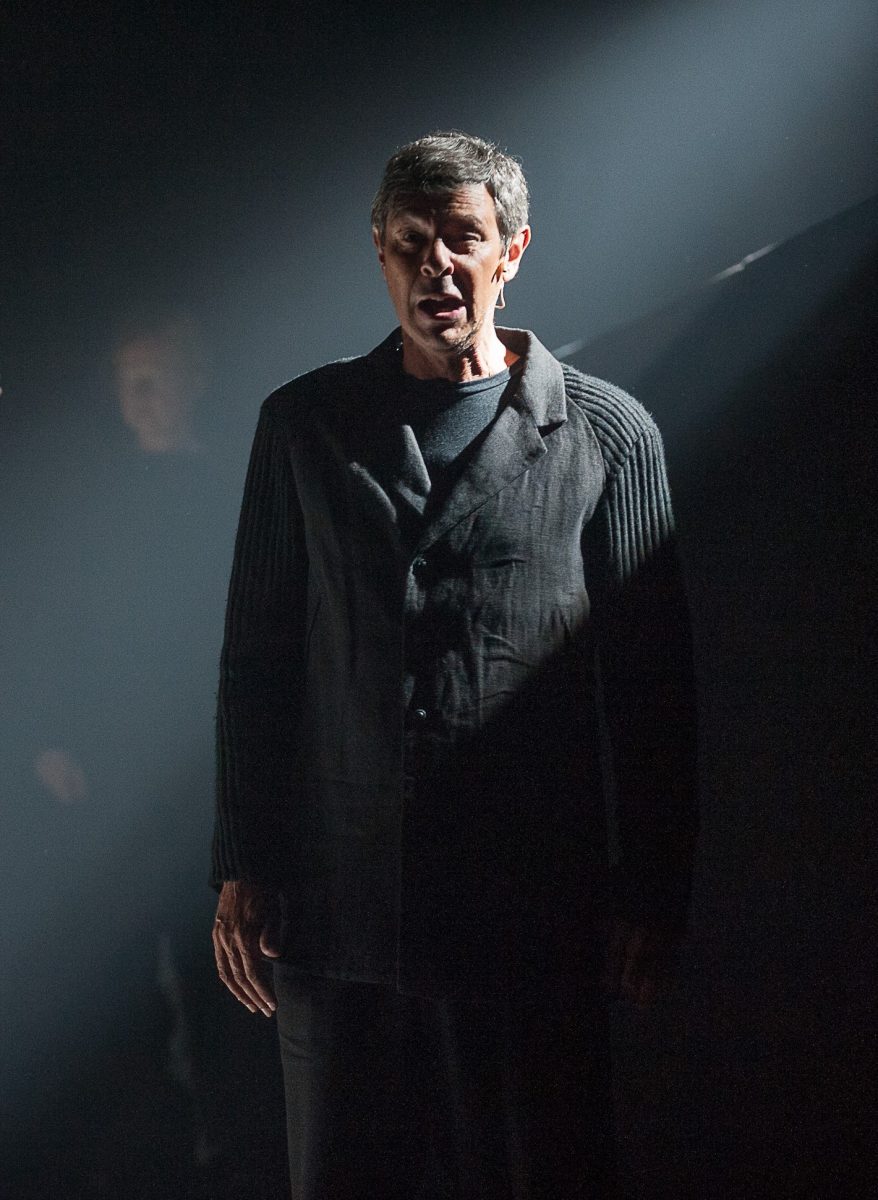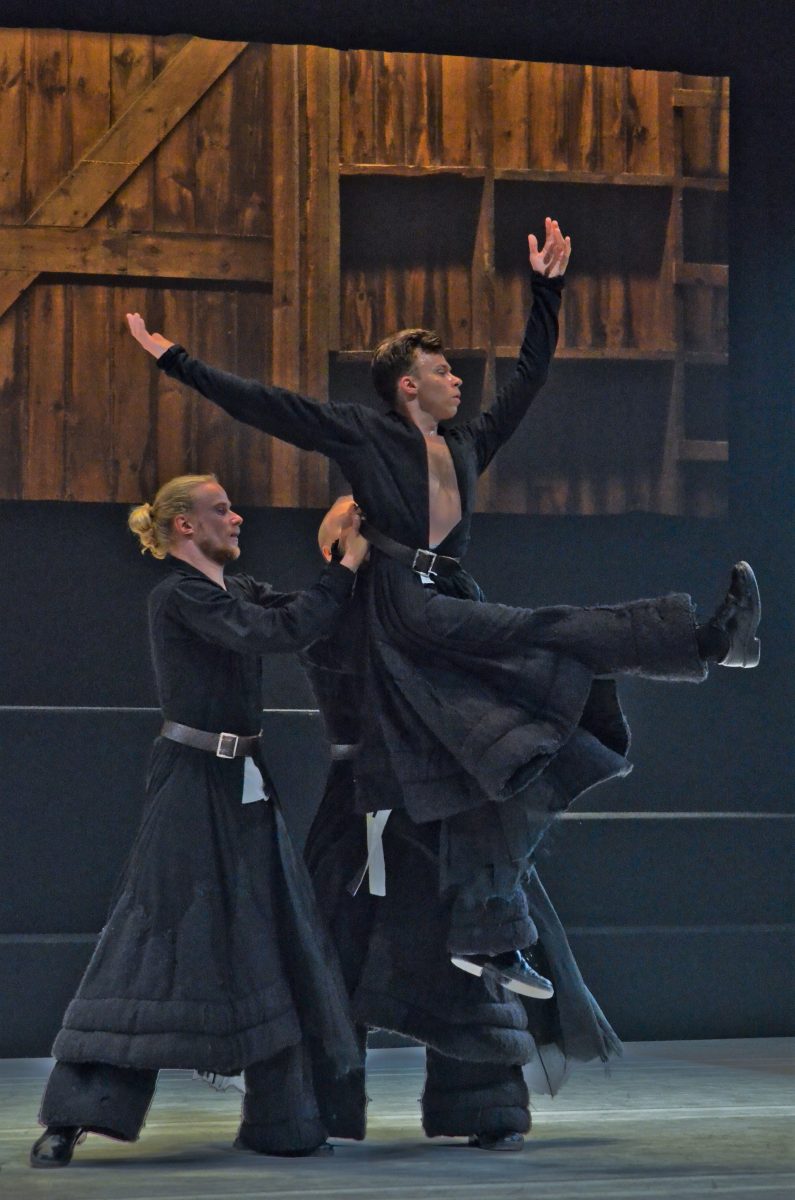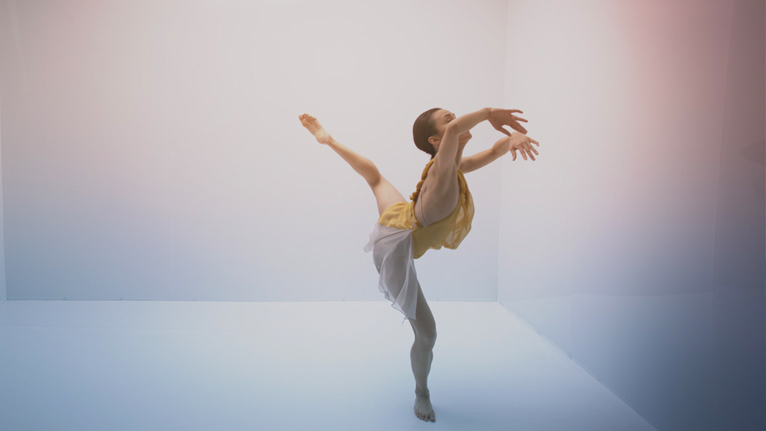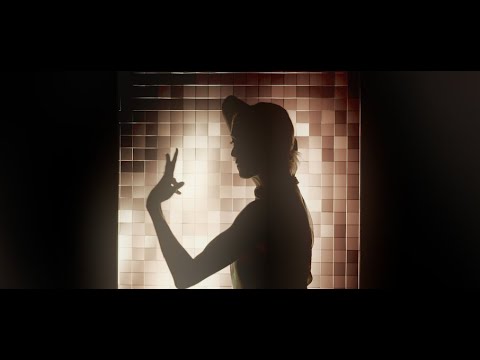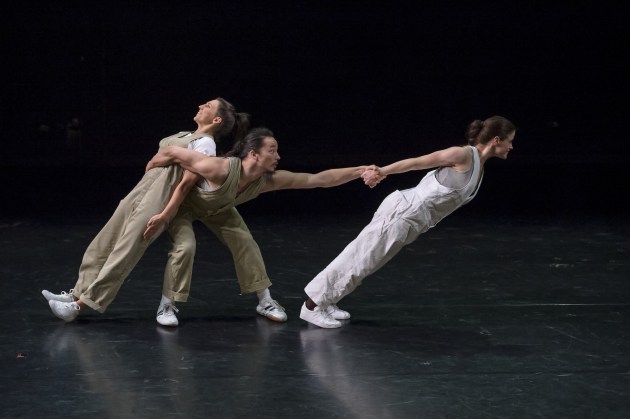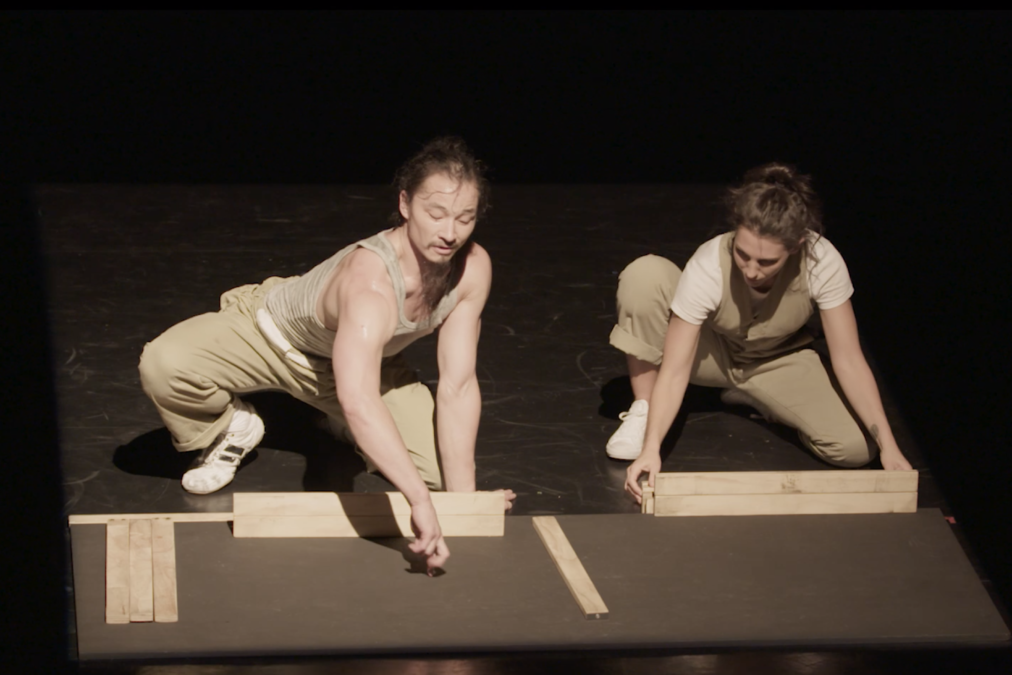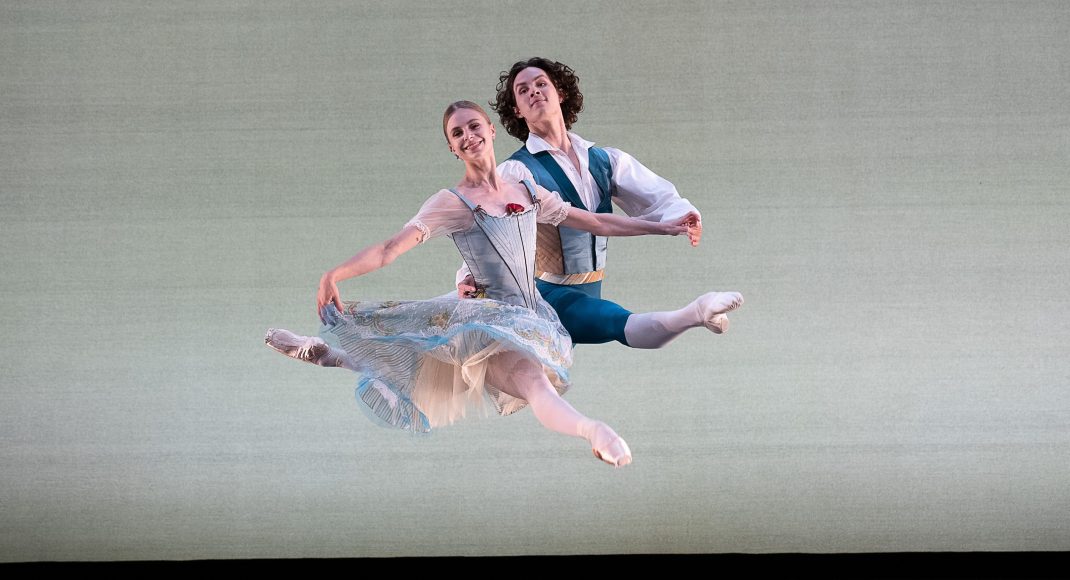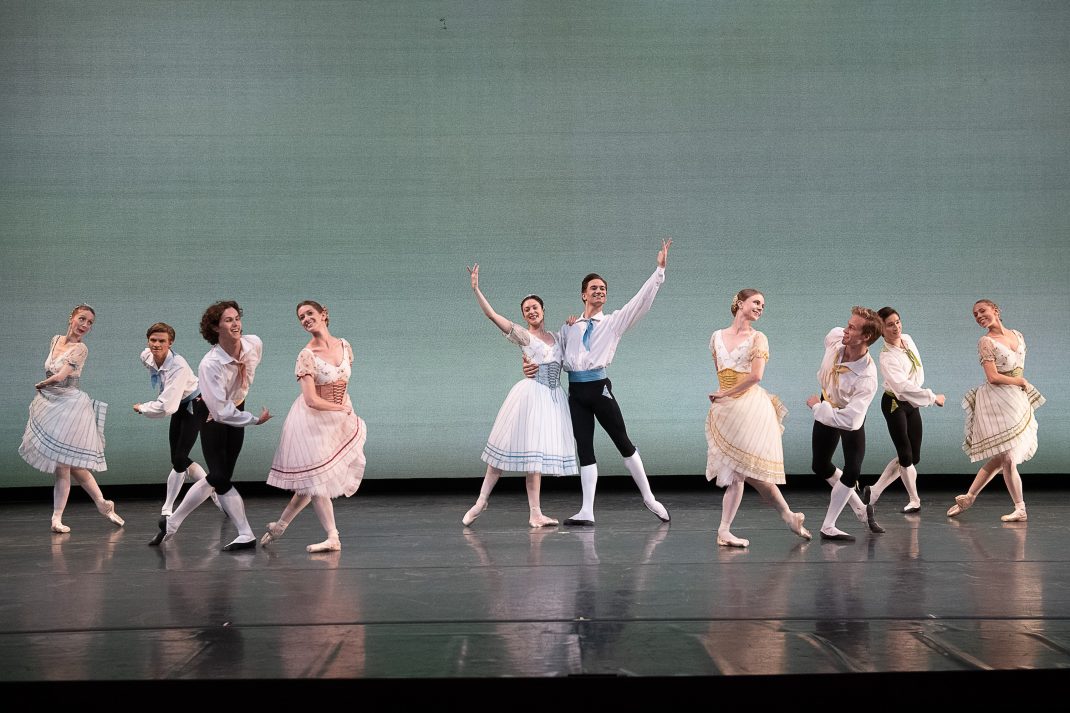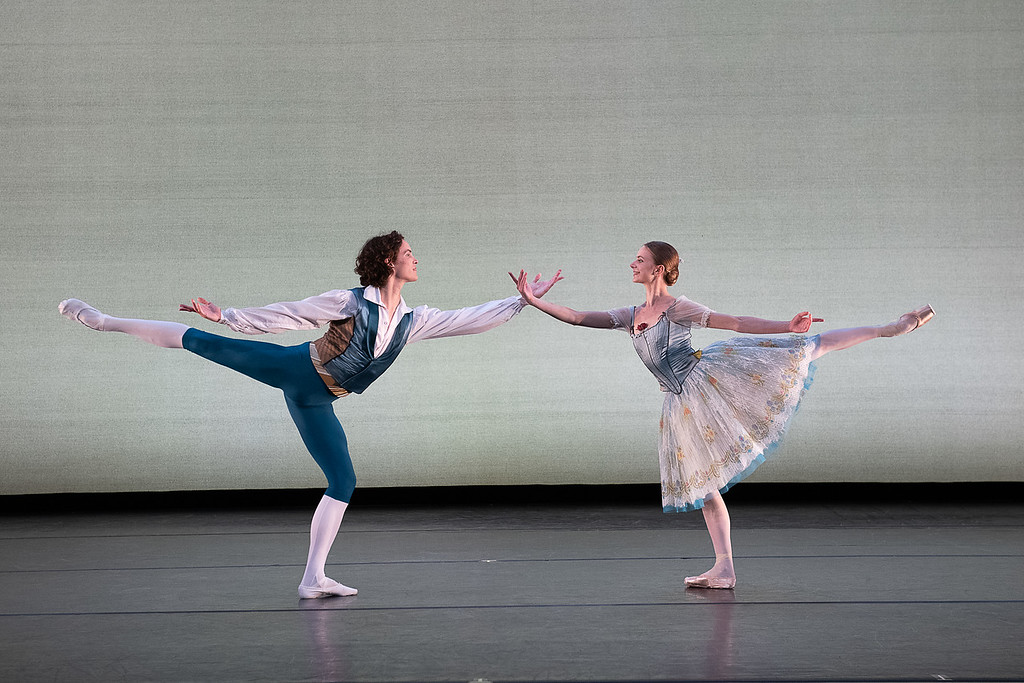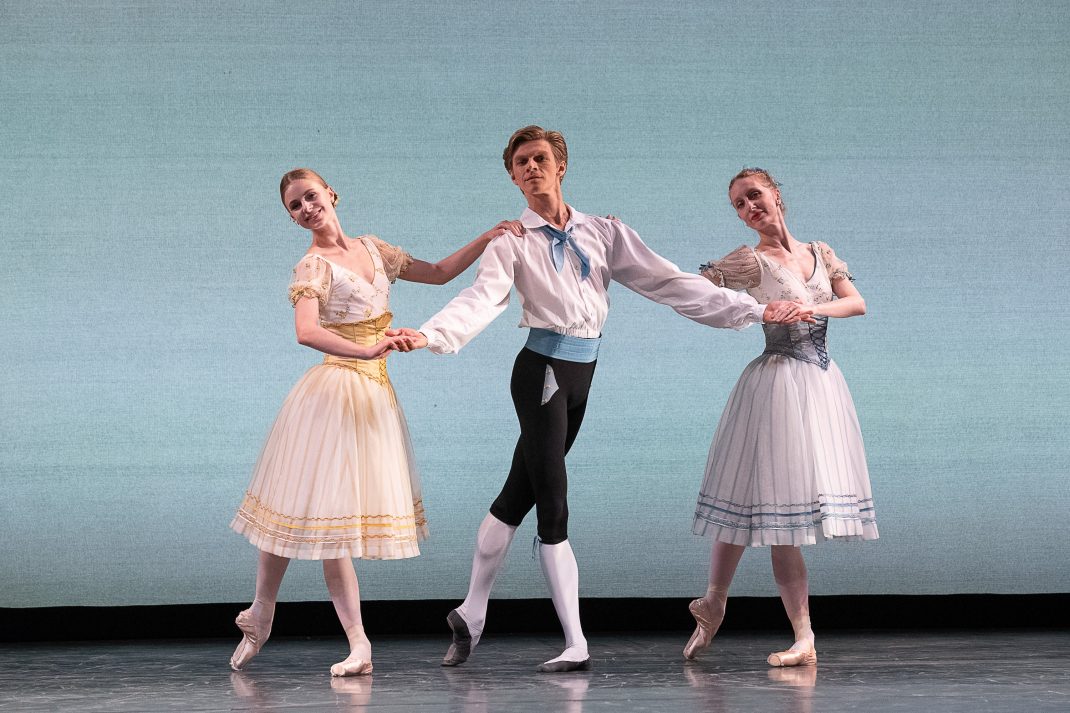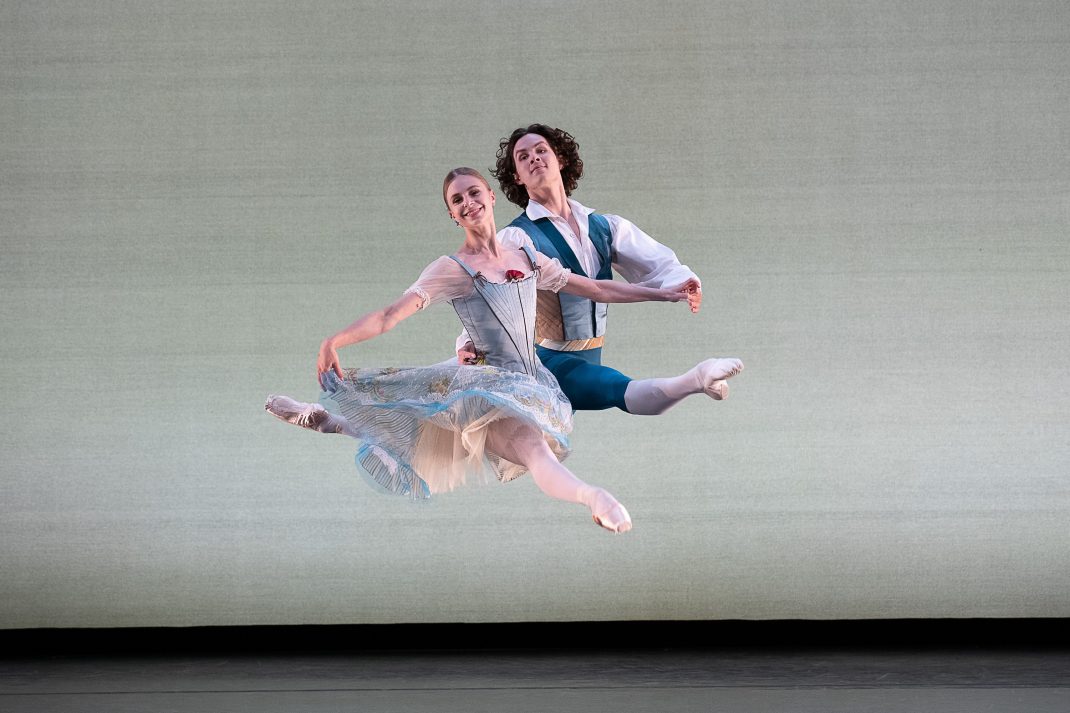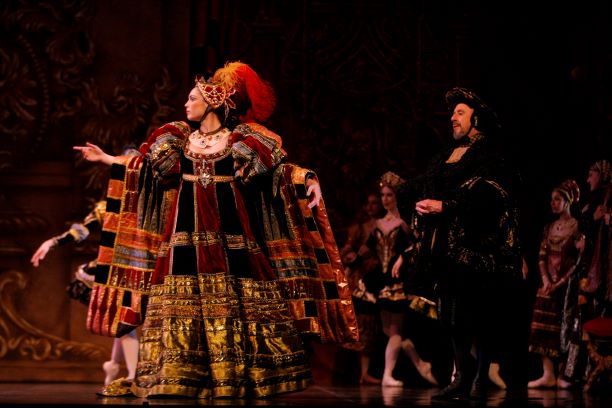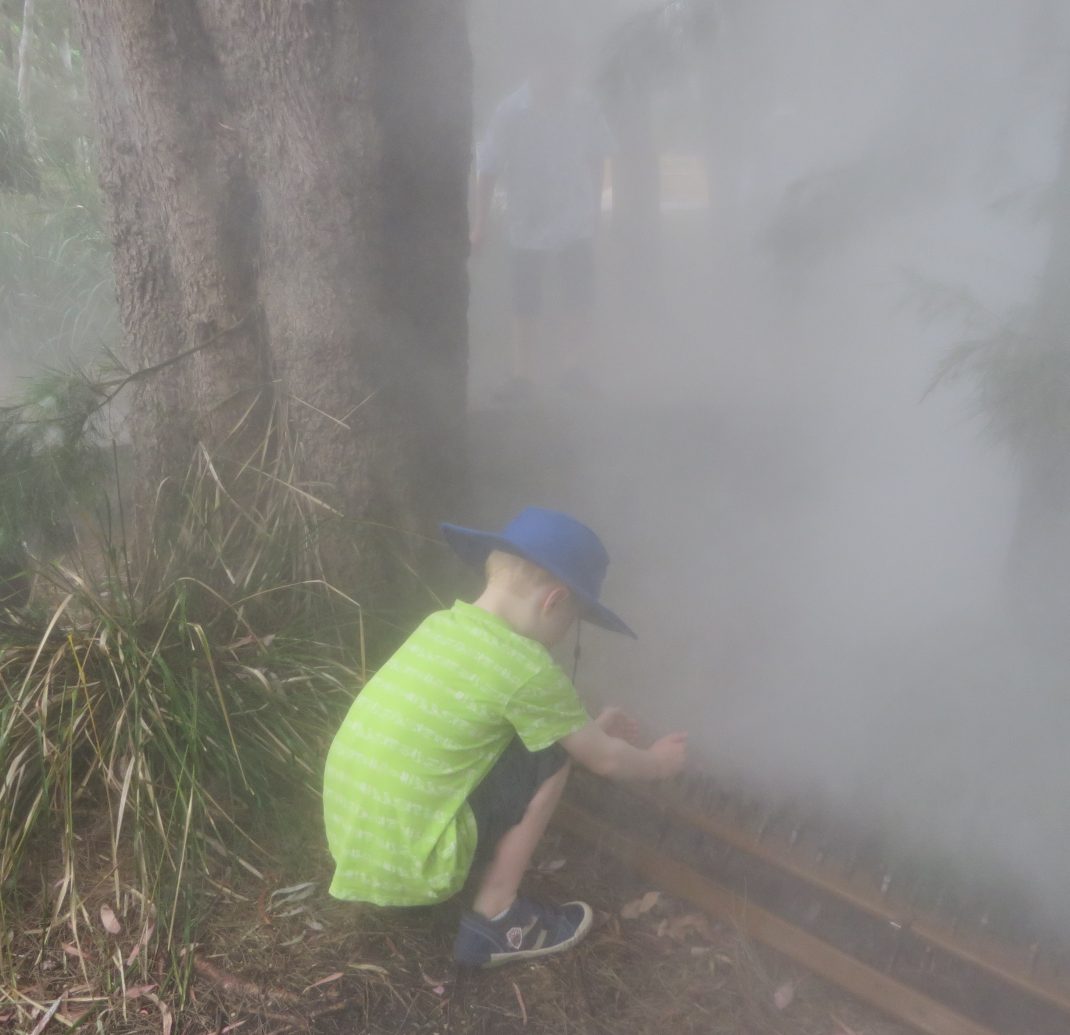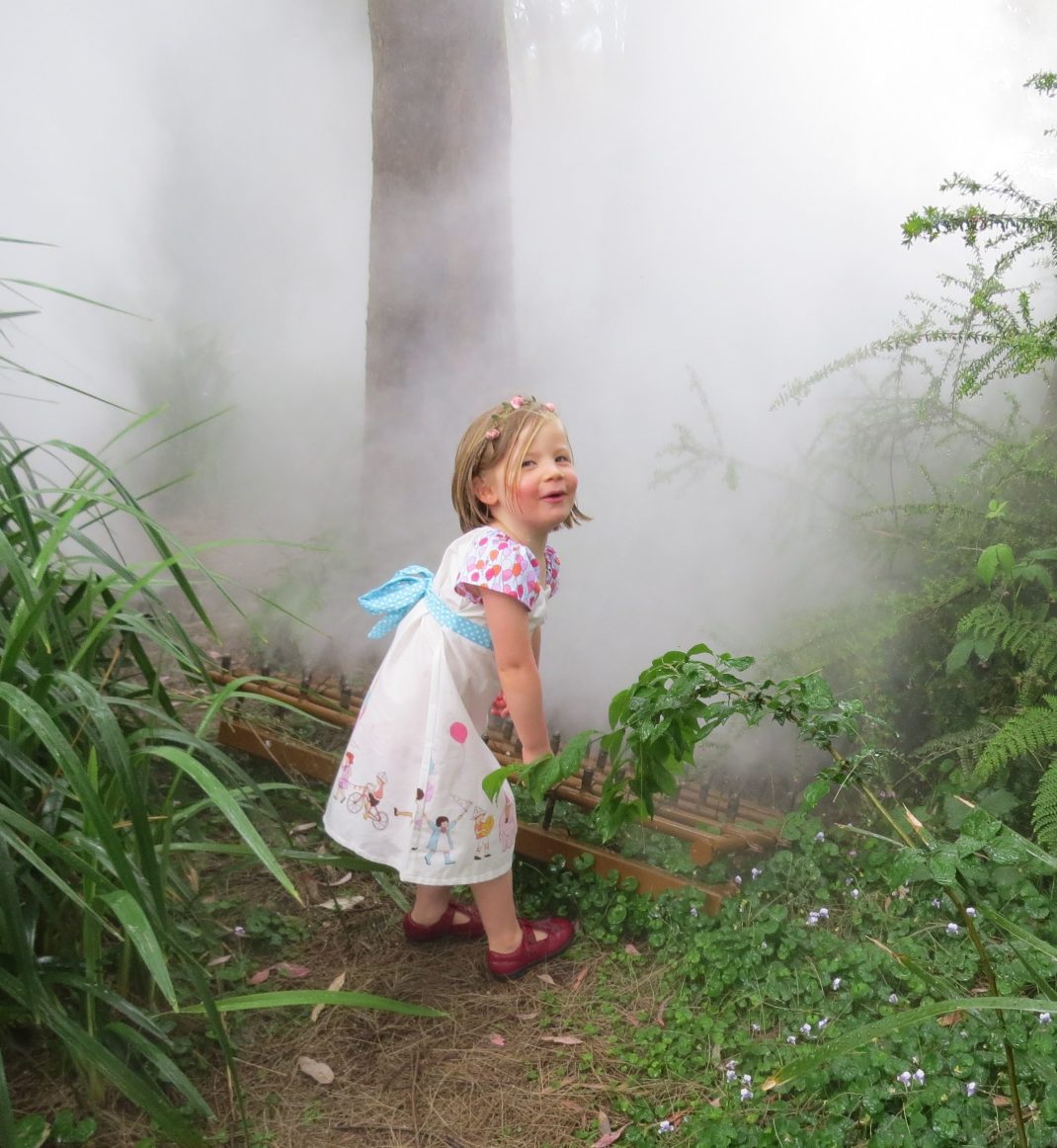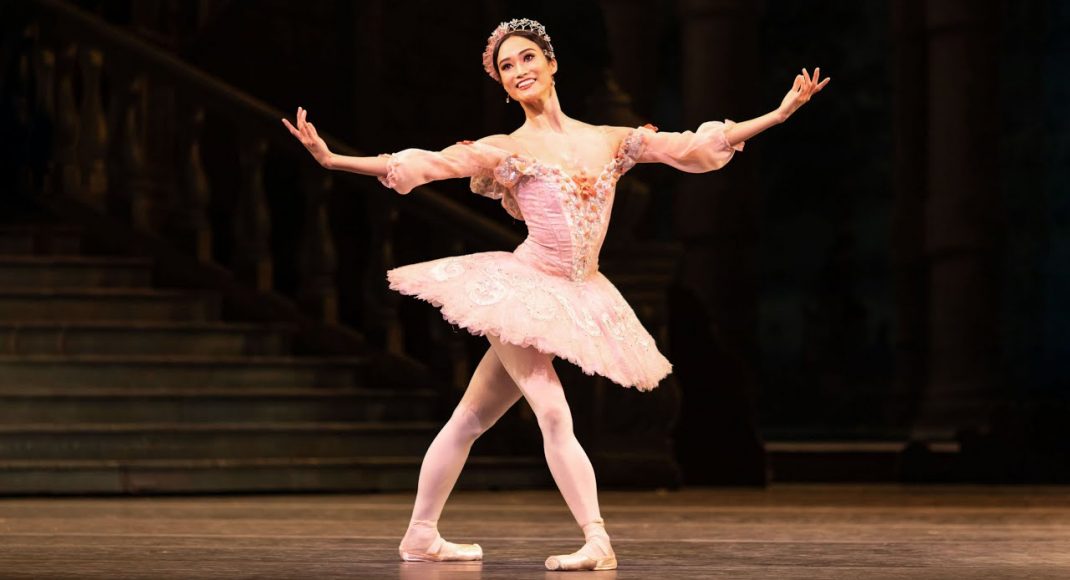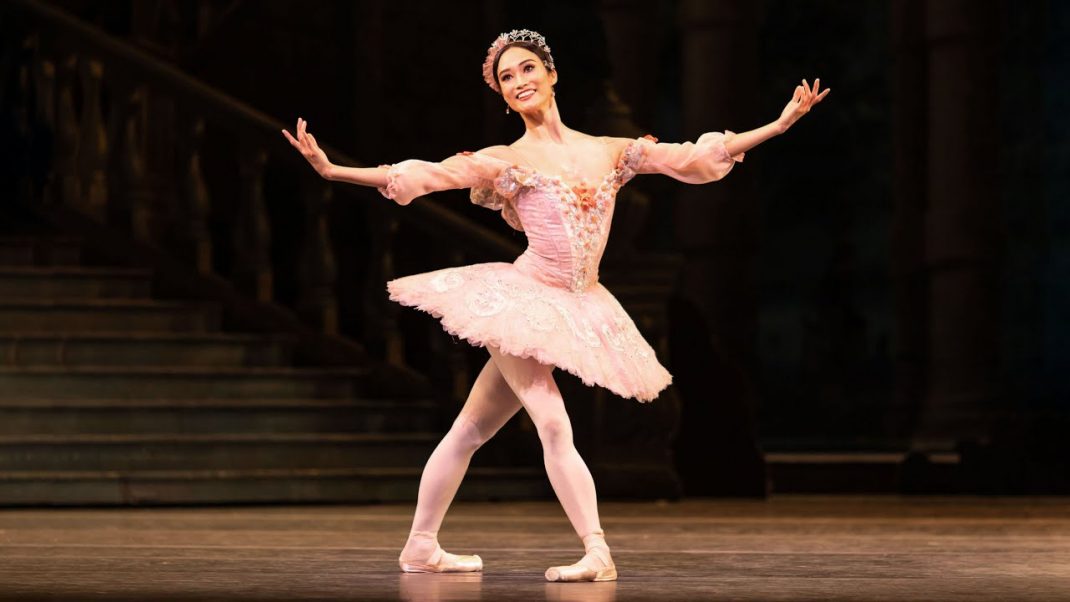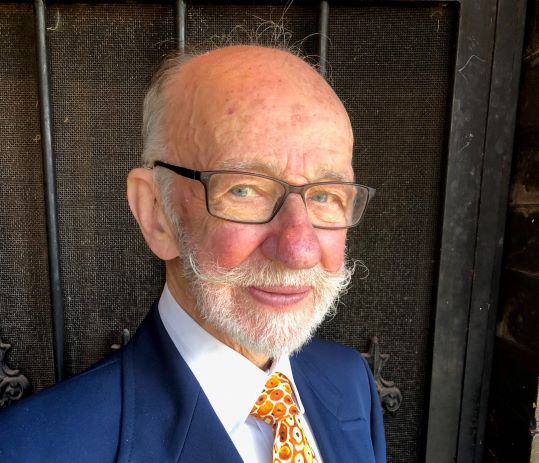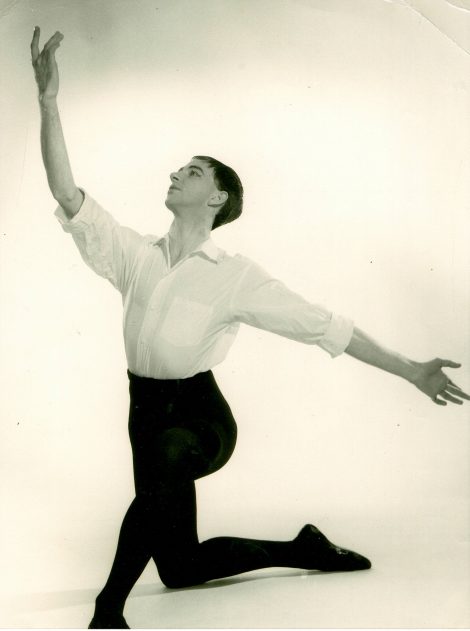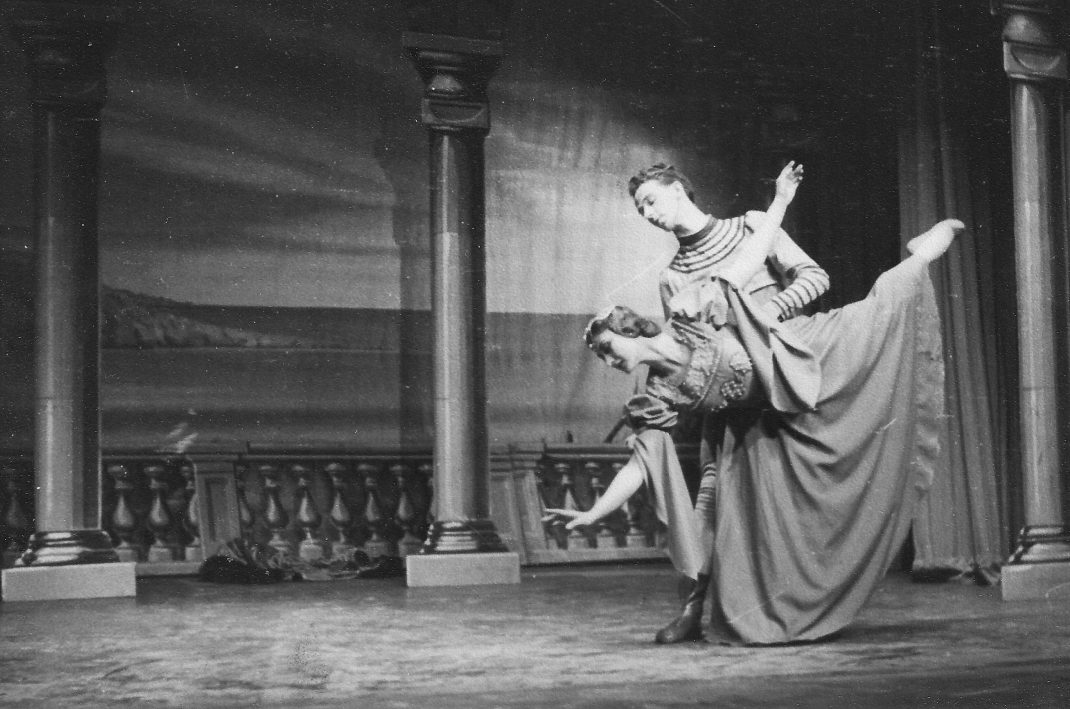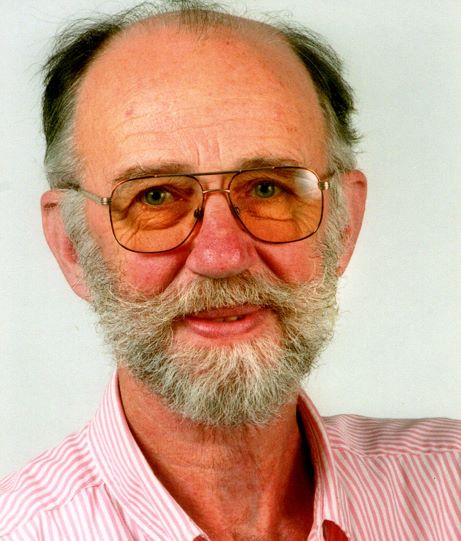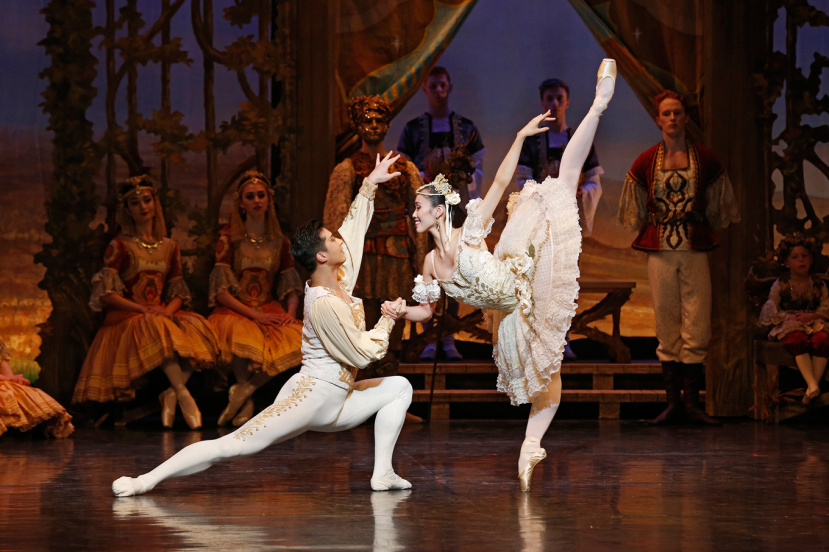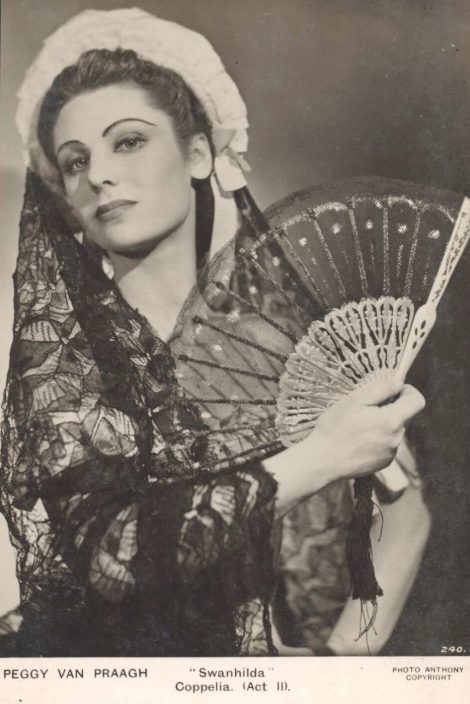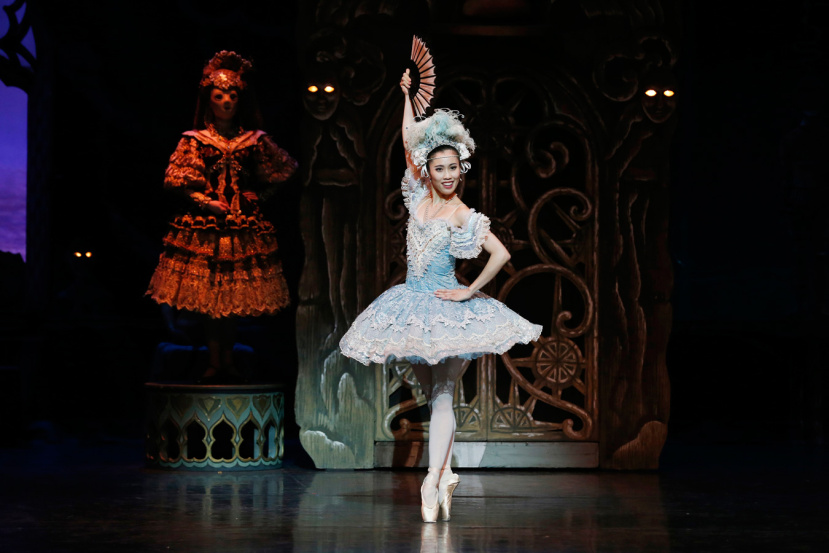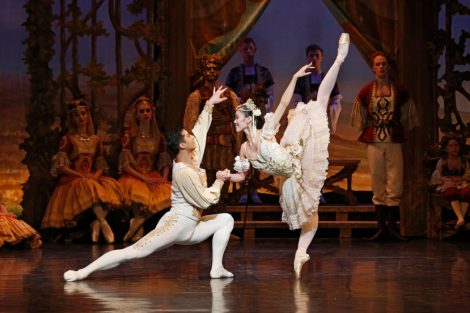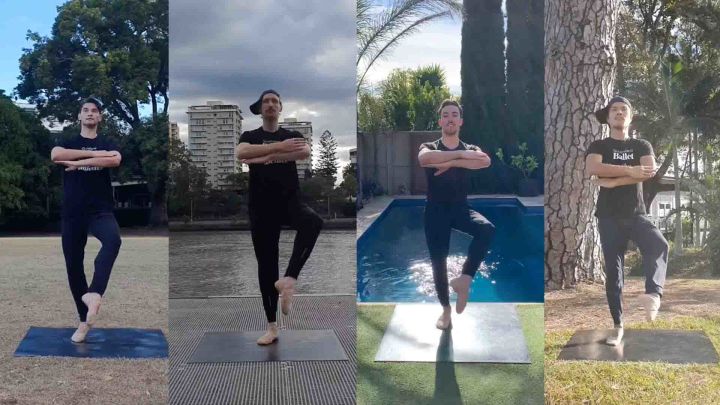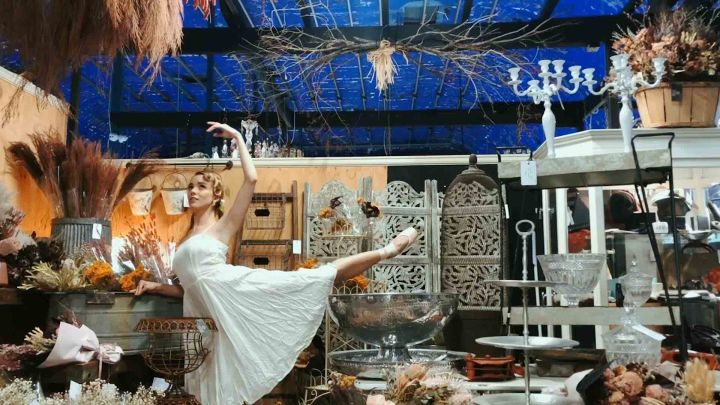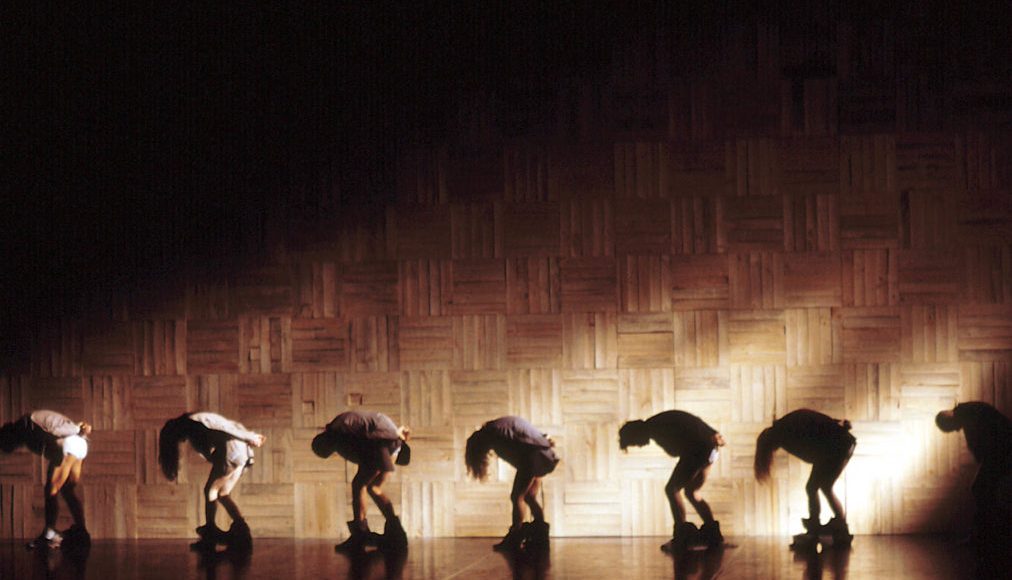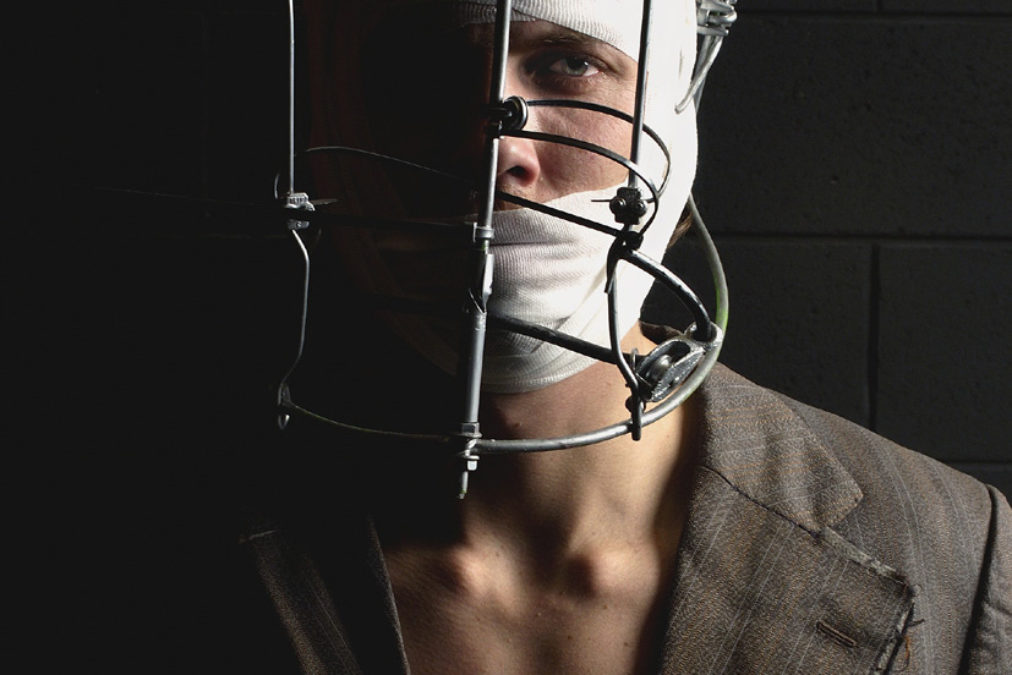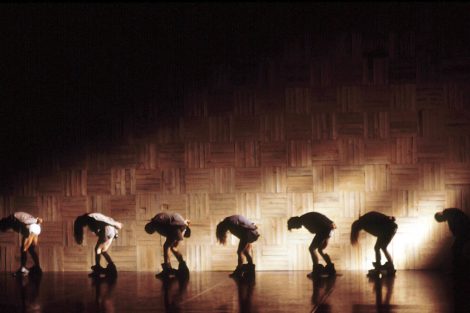Borrowed Light is a collaborative endeavour between the dancers of Finland’s Tero Saarinen Company and the singers of Boston Camerata. Inspired by the Shaker movement as it was made manifest in the United States largely during the eighteenth and nineteenth centuries, it premiered in France in 2004, came to Jacob’s Pillow in 2006, and then again in 2012. A film of that 2012 production was recently screened as part of the Pillow’s Virtual Festival for 2020. With choreography by Saarinen, accompanied by traditional Shaker songs sung by Boston Camerata, and with some stunning contributions from others in the creative team, Borrowed Light is a truly exceptional collaboration.
Borrowed Light begins in silence and semi-darkness. A single female dancer moves in a shaft of light. Slowly the stage space lightens a little and, dimly in the background, we can make out seven other dancers and eight singers. The solo dancer’s expansive arm movements seem to be calling the others into the performance. She begins to clap, her movement gets faster, and she adds some stamping movements. Slowly she is joined by the other dancers and singers and the performance moves forward.
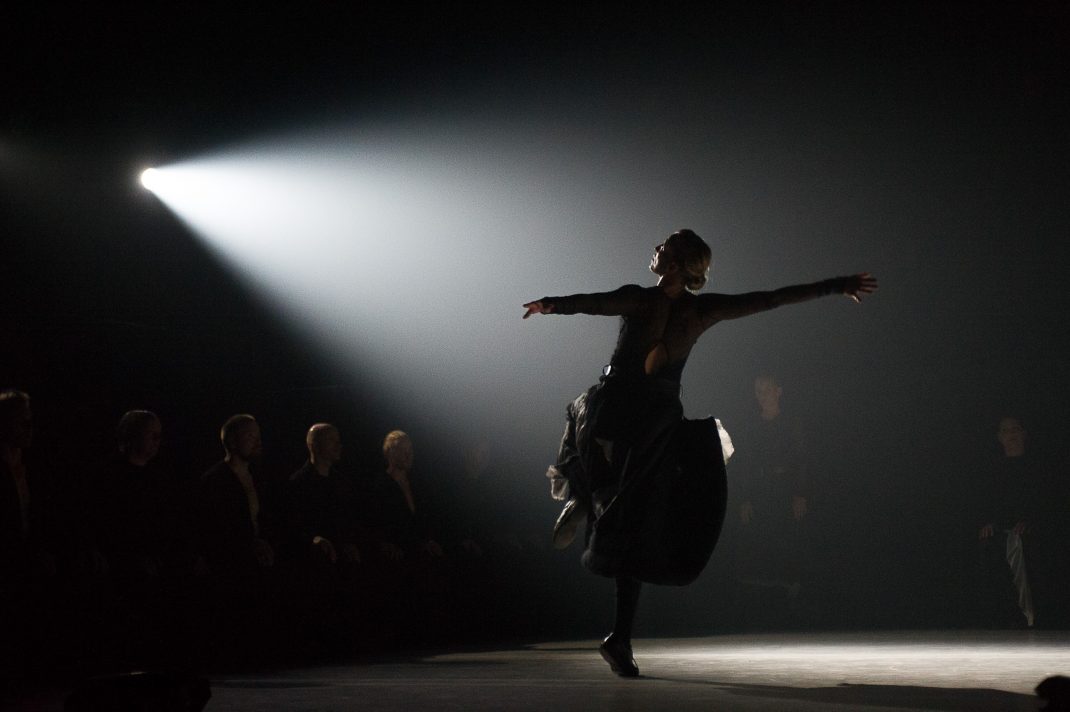
Looking back after the performance has finished, it seems clear that this opening section sets the scene for the rest of the performance. Light and dark change places frequently, slow and fast movements alternate, clapping and stamping feature at various times, and choreographically the work focuses on very loose swinging arms; fluid upper bodies; and wide, strong steps. Dancers and singers come and go as the centre of attention but are equal partners in the work.
Two sections stood out for me: a solo danced to a rendition of that well-known Shaker song Simple gifts, and a much wilder section danced by three couples to The great wheel is turning round. The solo to Simple gifts, began and finished in silence and throughout the solo the dancer scarcely moved within the stage space. But the expressive power of her movement, especially the detailed placing of the hands and fingers in the air and on the body, was exceptional. As for The great wheel, it began quite calmly with a spread-out circle of dancers. A smaller circle of singers positioned inside the large circle turned slowly as the singing progressed. But gradually the movement gathered momentum and the circle of dancers became tighter and closed in on itself. A sense of euphoria developed in the choreography and ultimately trance-like behaviour became apparent as some dancers fell to the ground. It was heart-stopping dancing and singing!
But of course there were many other sections that generated different emotions—the ecstasy of the dancers performing to Virgins clothed in a fresh white garment, or the seriousness of movement and song in I will comfort them that mourn, for example. In fact every moment of Borrowed Light was astonishing in its own way.
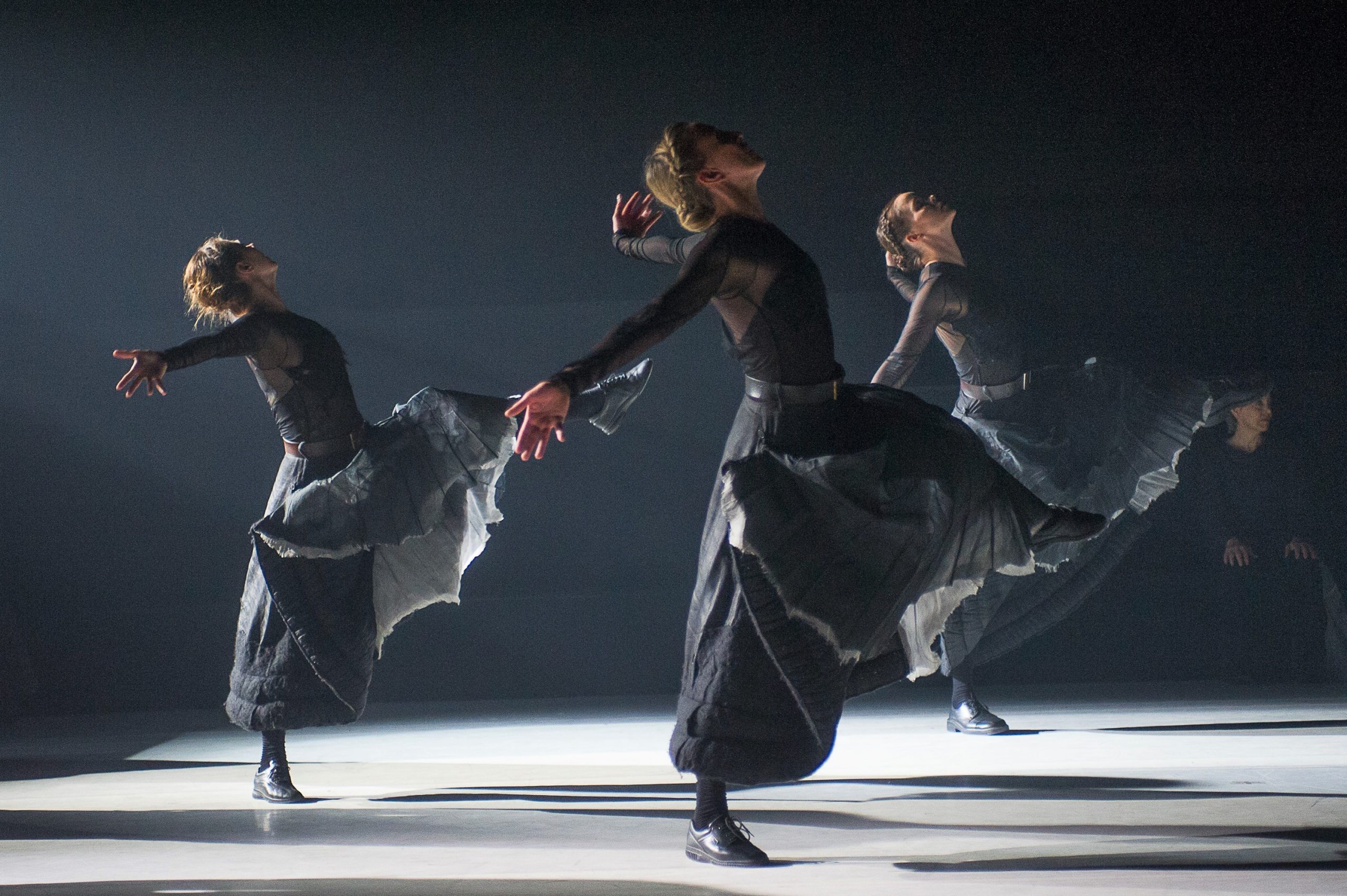
Costumes by Erika Turunen were mostly black but had exquisite detail and a touch of blue-grey colour, differently embedded into the costumes according to gender and role. They were masterly too in the way they played with texture and different fabrics and, in the case of the dancers, in the way they moved so beautifully.
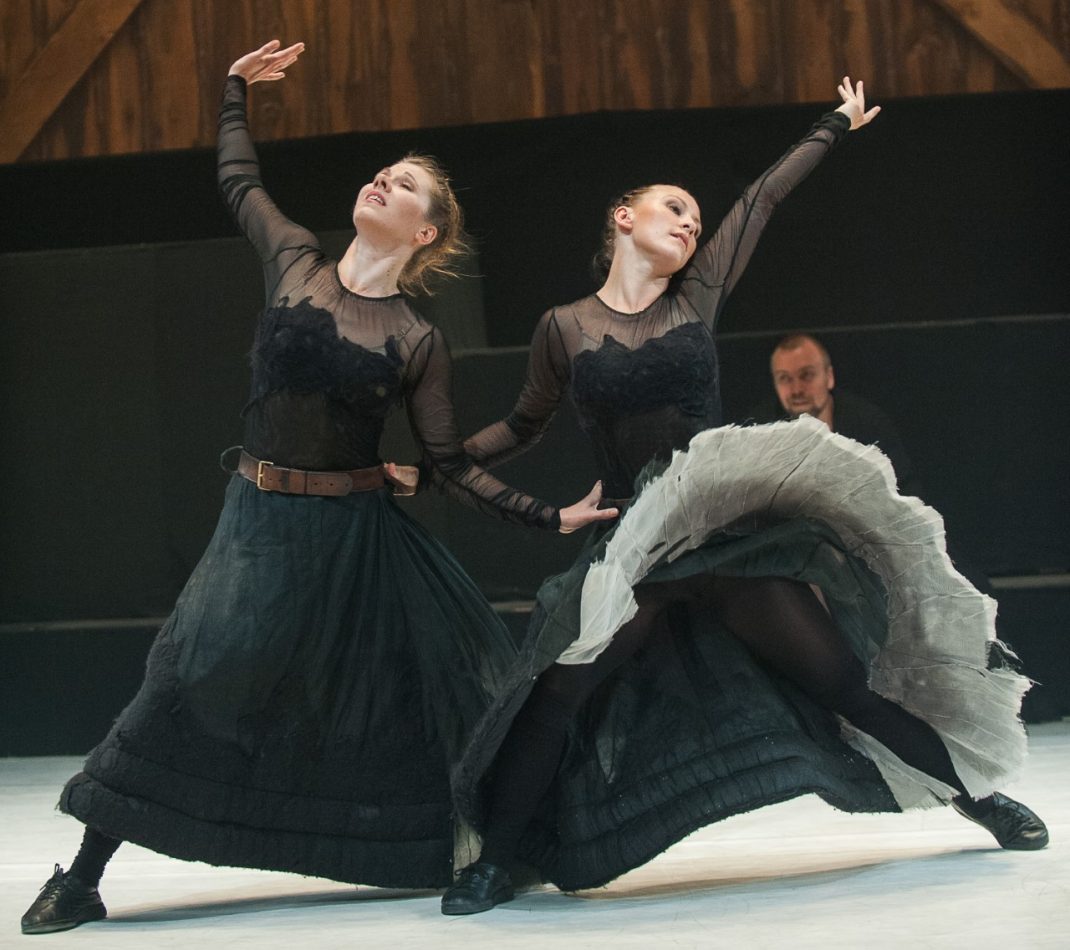
The set by Mikki Kunttu (who also designed the lighting) used the barn structure of the Ted Shawn Theatre in which the show was performed as a backdrop. Onstage there was a series of black risers. They functioned both as a platform for performance on various occasions and also as a resting place for performers when not singing or dancing. What was also quite distinctive about Borrowed Light was the way in which the artists interacted. There was no real separation between singers and dancers, an aspect of the work that set out to highlight the Shaker attitude to community.
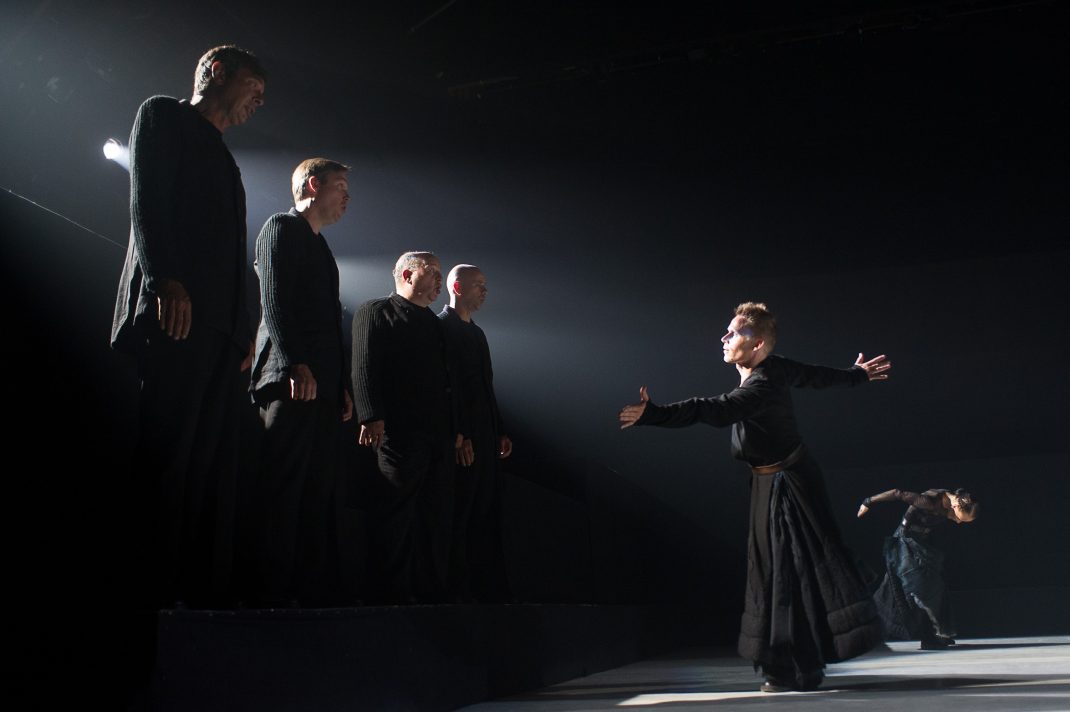
Borrowed Light was a truly masterful show. Each individual part was moving, or exciting, or dramatic, or religiously fanatical even. But the whole was coherent and so beautifully and unusually structured. I watched it twice but wish I could have watched it many more times, except that it was only available for a short period!
Michelle Potter, 24 August 2020
Featured image: Maria Nurmela and Tero Saarinen in a moment from Borrowed Light. Tero Saarinen Company and Boston Camerata, 2012. Photo: © Christopher Duggan
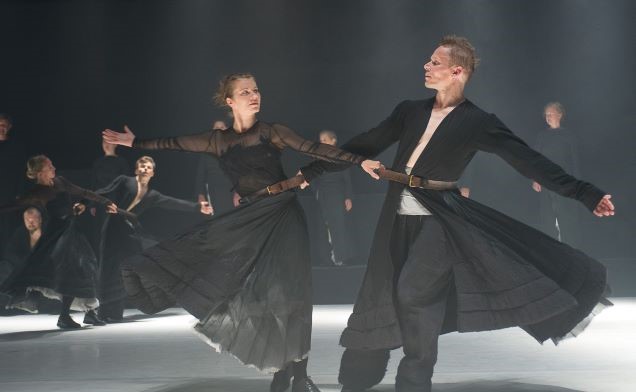
NOTE: The title Borrowed Light comes from ‘the architectural practice, common for the Shakers, of building windows into interior rooms, thus maximising dayllght and productivity.’
